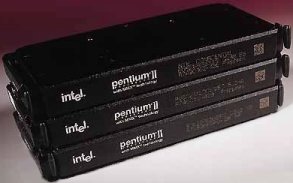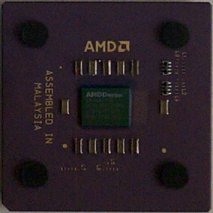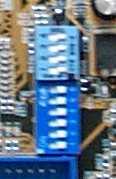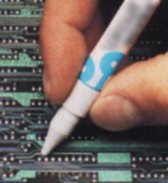Unlocking Socket A CPUs (1/2)
Posted by Wesley onChanging multiplier is the most effective way to overclock a CPU. However, this can be abused by 'remarkers', who are some disrespectful resellers that remarks the speed printed on the CPU to a higher speed. This way, they can sell the CPU more expensively, as higher speed grade chips are sold with higher premiums. The victims to this scheme are the consumers, who did not actually get the CPU he/she intended to buy, as well as the CPU manufacturer, who cannot receive the profit that they're supposed to receive and have their reputation tarnished since a remarked CPU is running at overclocked setting without knowledge of the customer and thus less stable.
Seeing this as a problem, Intel decided to start locking CPU multiplier permanently on their line of products since Slot1 interface was introduced. So current Intel products can only be overclocked by FSB speed manipulation. AMD, on the other hand, did not take such steps when producing K6-x line of products, although they provided somewhat less overclockability than Intel counterparts.
 | Times have changed, and AMD could not ignore the remarking problem so easily anymore. Predicting the success of their first true performance processor, Athlon, AMD decided to put the multiplier lock also. But it was different from Intel that, although the lock existed on the outside, there were ways to change the multiplier settings inside the cartridge. Upon removing the plastic cartridge, one can plug a 'GFD(Golden Finger Device)' onto a 'golden finger' contacts at the edge of the PCB or move around certain SMD resistors to change the multiplier setting. This has been welcomed by the overclockers' community, but a few very clever remarkers could still abuse this backdoor for their profit. |
| Now AMD is moving back to the socket type processor with the introduction of 'Thunderbird' Athlon and Duron. Unlike the first-generation Athlons, which came in cartridges and fit into Slot A, these Socket A processors cannot contain neither a 'golden finger' nor SMD resistor for multiplier manipulation since there can only be CPU core, connection pins, and ceramic encasings. It seemed first that it may either be unlocked like the previous socket processors or be locked like the current Intel processors. Now that the actual product has come out and went through scrutinizing eyes of many hardware sites, it has been discovered that the Socket A does not exactly fall into either of the categories. |  |
On the Socket A processors, several 'golden bridges' or set of tiny wires less than a millimeter wide are present with identification such as L3 as you can see in the picture above, at the right and the bottom of the core. The multiplier and the voltage of the chip was determined by how these bridges were cut off by laser in the manufacturing process. This is very good for AMD two-fold; one, they can set the speed they desire after all the assembly and tests are done very easily, meaning less chips are wasted. Two, it will be visually evident if a remarker was to attempt remarking, thus keeping remarking rate to a very low level. Why? The bridges exposed on the surface of the chip, so it is easy to notice, and since they are so small it is hard to cut and connect them without looking tampered.
 | The laser-set multiplier settings were discovered to be adjustable by the motherboard; certain pins from the processor could be controlled so that the multiplier can be set at the user's desire. In case of some motherboards, notably Asus A7V, dipswitches were provided to produce such effect, becoming a choice motherboard for overclockers. Other 'normal' motherboards can still be modified by the user to add a multiplier adjustment support. Then came the bad news: unlike the processors reviewed by many hardware sites, AMD decided to lock the multiplier setting on retail version of the Socket A CPU in such a way that motherboard dipswitches or modification could not actually change the multiplier. This has been confirmed, and although regional availability may vary, there are now locked Socket A CPUs in circulation. |
Of course, the overclockers' community certainly wasn't impressed and compared the locked version to unlocked version to see what was done. It was found that all the 'L1' bridges were cut off by laser on the locked chip, meaning that L1 bridges were the paths to which a motherboard could modify a processor's multiplier. Reconnecting them will revert the locked processor back to the original unlocked state. But how is one supposed to do this?
| Hardware sites generally suggested using a conductive pen to connect the bridges. Unfortunately, there are many disadvantages to this. One, it is a bit too expensive just for doing this relatively small job. It costs around $15 (perhaps $20 after shipping) just to get a hold of one of these, and you'll not be using about 95% of the content anyway unless you plan some circuitry creation. Two, it isn't so widely available. I've visited the biggest electronic parts shop in town and they didn't know what it was (for your reference, the population of this town is over a million). Three, some pens produce too think a line for connecting the small bridges we are supposed to tackle. So what was the alternative to this? Read on. |  |